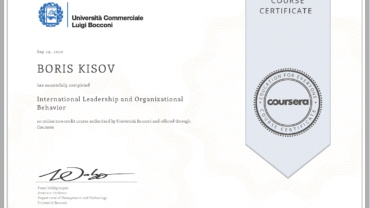
Leadership in the organization. Team and personal development
MOSCOW INSTITUTE OF OPEN EDUCATION
Issued May 2017
Leadership issues have attracted people’s interest since ancient times. However, a systematic, purposeful and broad study of leadership began only from the time of F. Taylor. There has been a lot of research done.
The nature of leadership can be better understood by comparing it to management itself. Being a manager and being a leader in an organization are not the same thing. A manager, in his influence on the work of subordinates and building relationships with them, primarily uses and relies on the official basis of power and the sources that feed it. Leadership as a specific type of management relationship is based more on the process of social impact, or rather, interaction in the organization. This process is much more complex, requiring a high level of interdependence among its participants. Unlike management itself, leadership implies the presence of followers in the organization, not subordinates. Accordingly, the relationship “boss – subordinate” inherent in the traditional view of management is replaced by the relationship “leader – follower”.
Leadership types:
- Formal leadership – the process of influencing people from the position of the position held in the organization.
- Informal leadership – the process of influencing through the abilities and skills or other resources people need.
Leadership is a type of managerial interaction (in this case, between a leader and followers), based on the most effective combination of various sources of power for a given situation and aimed at encouraging people to achieve common goals.
Leadership is not management. Management focuses on getting people to do the right thing, and leadership on getting people to do the right thing.
The distinction between leader and manager is made in many areas.
A manager is a person who directs the work of others and is personally responsible for its results. A good manager brings order and consistency to the work being done. He builds his interaction with subordinates more on facts and within the framework of established goals.
A leader inspires people and inspires enthusiasm in employees, conveying to them his vision of the future and helping them adapt to new things, go through the stage of change.
In the context of leadership, special attention should be paid to the authority of the leader and to how it is formed.
Boris Kisov

Innovation, IT & Management
10+ years of initiating and delivering sustained results and effective change for companies across a wide range of industries including
innovation, enterprise software, digital marketing, start-ups, advertising technology, e-commerce and government.










